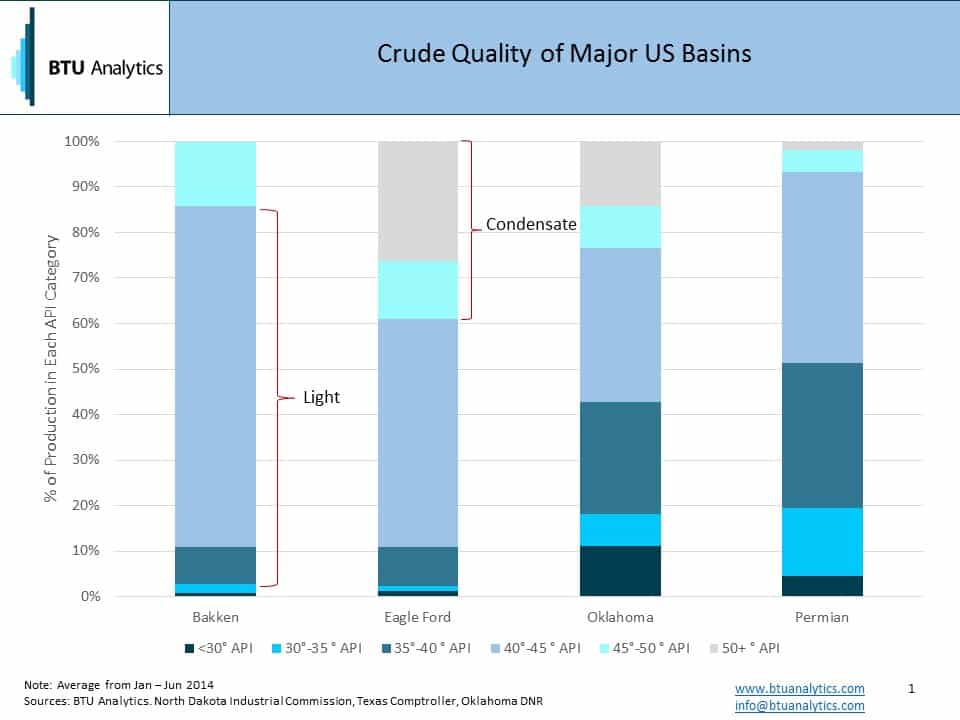With WTI reaching lows that haven’t been tested in years, people are trying to gather as much information to help inform them which basins in the US will survive. Today, BTU wanted to visit crude quality for several of the major oil producing regions in the US to help provide more information to the market. Crude quality is important because it is an indicator of the slate of refined products it will create when put through a refinery. Typically, an intermediate or true light barrel yields more high value middle distillates and less lower value naphtha and LPGs than a condensate.

It’s no secret that the Eagle Ford is expected to be the largest contributor to condensate production growth in the US over the coming years (At BTU, condensate is classified as liquids from gas wells at the lease level and crude oil production with and API gravity of 45° or higher). However, using data from various state reporting agencies, it is clear that there is also a lot of crude production coming from several basins in the US that falls into the 40° – 45° API category. While this band of crude does not fall into BTU’s definition of condensate, it is significantly lighter than many traditional domestic sources like WTI Midland, LLS, and Alaskan crude which have an API range more in the 30°-37° category.
In North Dakota, for Jan-Jun. 2014, 75% of production falls firmly into the 40° – 45° category compared to 50% of Eagle Ford production, 34% of Oklahoma production, and 42% of the Permian. While gravity is only a portion of what refiners take into account when looking at purchasing crude, the high levels of crude being produced in this band from plays other than the Bakken suggests that having a “heavier” light crude may not be as significant of an advantage for the Bakken as once thought. Being farthest from the Gulf Coast market makes transportation from the Bakken more expensive to the Gulf Coast. If the Eagle Ford, Permian, and Oklahoma 40° – 45° crude all have similar middle distillate yields to Bakken, then the “quality” advantage that producers have long touted for Bakken barrels could be deteriorated. Conversely, Bakken crude has a transportation cost advantage into the East and West coasts over the Eagle Ford and the Permian. With the oversupply of light crude in the US, transportation, break evens, and crude quality will all be important factors in determining the longevity of production growth. To follow these and other factors effecting the Oil, Natural Gas and NGL markets from an upstream perspective, check out our Upstream Outlook report.









